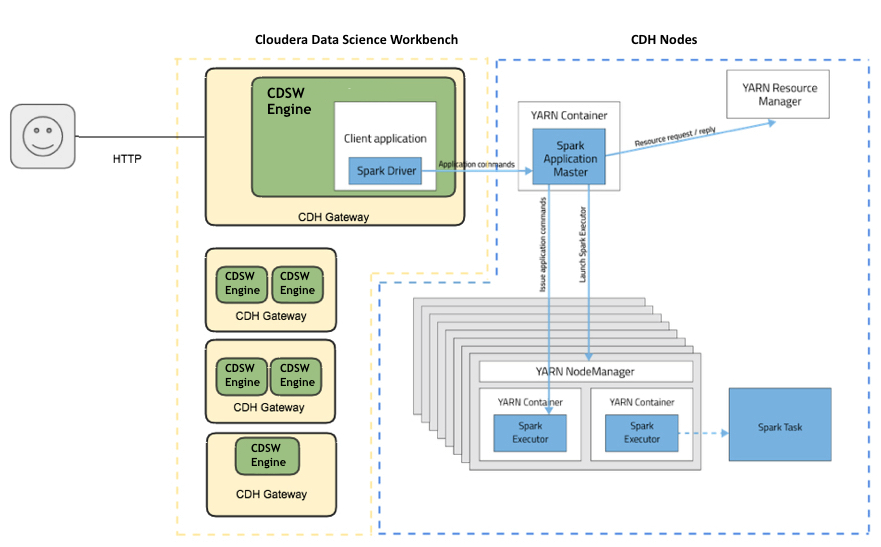Using Cloudera's Distribution of Apache Spark 2 with Cloudera Data Science Workbench
Apache Spark is a general purpose framework for distributed computing that offers high performance for both batch and stream processing. It exposes APIs for Java, Python, R, and Scala, as well as an interactive shell for you to run jobs.
Cloudera Data Science Workbench provides interactive and batch access to Spark 2. Connections are fully secure without additional configuration, with each user accessing Spark using their Kerberos principal. With a few extra lines of code, you can do anything in Cloudera Data Science Workbench that you might do in the Spark shell, as well as leverage all the benefits of the workbench. Your Spark applications will run in an isolated project workspace.
Cloudera Data Science Workbench's interactive mode allows you to launch a Spark application and work iteratively in R, Python, or Scala, rather than the standard workflow of launching an application and waiting for it to complete to view the results. Because of its interactive nature, Cloudera Data Science Workbench works with Spark on YARN's client mode, where the driver persists through the lifetime of the job and runs executors with full access to the CDH cluster resources. This architecture is illustrated the following figure:

The rest of this guide describes how to set Spark 2 environment variables, manage package dependencies, and how to configure logging. It also consists of instructions and sample code for running R, Scala, and Python projects from Spark 2.
Continue reading:
Cloudera Data Science Workbench allows you to access the Spark History Server and even transient per-session UIs for Spark 2 directly from the workbench console. For more details, see Accessing Web User Interfaces from Cloudera Data Science Workbench.